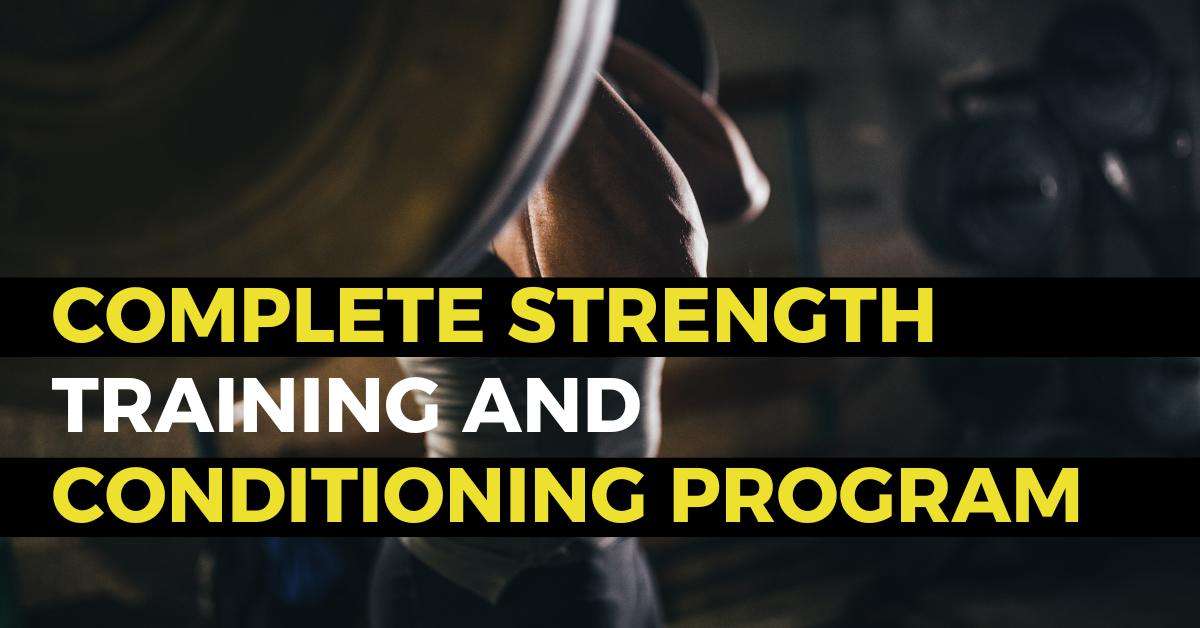
In the fitness world, “functional strength training” has become a buzzword, but what exactly does it mean? If you’re looking to improve your fitness, boost your everyday performance, or simply understand the benefits of this training style, you’ve come to the right place. Understanding what is functional strength training can open up a new realm of possibilities for your workouts, making them more effective, practical, and tailored to your daily needs.
In this article, we’ll explore what is functional strength training, how it differs from other types of workouts, its benefits, and how you can incorporate it into your routine.
What is Considered Functional Strength Training?
Functional strength training involves exercises that prepare your body for real-life movements and activities. Unlike traditional strength training, which often focuses on isolating specific muscles, functional training works multiple muscle groups simultaneously. This type of training mimics the movements you perform in your daily life, such as lifting, bending, pulling, and reaching, making you stronger and more capable in everyday tasks.
Key Elements of Functional Strength Training:
- Multi-joint Movements: Exercises that involve more than one joint, such as squats, lunges, and deadlifts.
- Core Engagement: A strong core is crucial in functional training as it stabilizes your body during complex movements.
- Balance and Stability: Functional exercises often require you to maintain balance, improving your coordination and stability.
- Mobility and Flexibility: Functional training enhances your range of motion, making everyday movements easier and safer.
For example, a squat is a functional exercise because it mirrors the action of sitting down and standing up. A deadlift mimics the movement of picking up something heavy from the ground. By strengthening these movement patterns, you improve your ability to perform daily activities with greater ease and less risk of injury.
What is Functional Strength Training on an Apple Watch?
If you own an Apple Watch, you might have noticed a workout option called “Functional Strength Training.” This feature allows you to track your functional workouts accurately, giving you insights into your performance and progress.
How Does It Work?
When you select “Functional Strength Training” on your Apple Watch, it tracks your heart rate, calories burned, and the duration of your workout. The Apple Watch uses its sensors to monitor your movement patterns, giving you a comprehensive overview of your training session. This is particularly useful because functional strength training involves varied, dynamic movements that may not fit neatly into traditional workout categories.
Benefits of Using Apple Watch for Functional Training:
- Accurate Tracking: Get real-time feedback on your workout intensity and calorie burn.
- Workout Summaries: Review your session’s stats, helping you adjust your routine for better results.
- Goal Setting: Set and track specific fitness goals related to functional strength training.
Using the Apple Watch to track your functional strength training sessions helps you stay motivated and ensures that you’re on the right path toward your fitness goals.
What is the Difference Between Core and Functional Training?
While core training and functional training are related, they serve different purposes and focus on different aspects of fitness.
Core Training:
Core training specifically targets the muscles in your abdomen, lower back, pelvis, and hips. These muscles act as a stabilizing force for your entire body. Core exercises often include planks, crunches, and leg raises, all designed to build strength and stability in this area.
Functional Training:
Functional training, on the other hand, involves full-body movements that engage multiple muscle groups, including the core. The primary goal is to enhance your ability to perform everyday activities. While core strength is a component of functional training, it’s not the sole focus. Functional exercises like squats, lunges, and kettlebell swings work the core along with other muscles, providing a more holistic approach to fitness.
Key Differences:
- Focus: Core training isolates the core muscles, while functional training incorporates the core within broader, multi-joint movements.
- Purpose: Core training aims to strengthen the core muscles for stability, while functional training aims to improve overall movement patterns and daily functionality.
- Exercises: Core training might include exercises like sit-ups and planks, whereas functional training includes compound movements like deadlifts, which involve multiple muscle groups.
In summary, core training is a component of functional training, but functional training encompasses a wider range of exercises aimed at improving overall strength and mobility.
Can You Lose Weight with Functional Strength Training?
Yes, you can lose weight with functional strength training. While it’s often associated with improving strength and performance, functional training can also be an effective way to burn calories and shed fat.
How Does Functional Training Aid Weight Loss?
- High-Calorie Burn: Functional exercises often involve large muscle groups and complex movements, leading to a higher calorie burn during workouts.
- Increased Muscle Mass: Building muscle through functional strength training boosts your metabolism, helping you burn more calories even at rest.
- Enhanced Cardiovascular Health: Many functional exercises, such as kettlebell swings or burpees, have a cardiovascular component, which can improve heart health and increase calorie expenditure.
- Sustainable and Engaging Workouts: Because functional training mirrors everyday movements, it’s easier to stay motivated and consistent with your workouts, which is key to weight loss.
Incorporating functional strength training into your fitness routine can lead to significant improvements in your body composition, helping you lose weight while also gaining strength and mobility.
FAQs About Functional Strength Training
1. How often should I do functional strength training?
For most people, engaging in functional strength training 2-3 times per week is ideal. This frequency allows you to build strength and improve your fitness without overtraining. As you become more advanced, you can adjust the frequency and intensity to match your fitness goals.
2. Can beginners do functional strength training?
Absolutely. Functional strength training is suitable for all fitness levels, including beginners. Start with basic exercises like bodyweight squats, push-ups, and planks. As you build strength and confidence, you can progress to more complex movements and add weights or resistance.
3. What equipment do I need for functional strength training?
One of the benefits of functional strength training is its versatility. You can perform many functional exercises with minimal equipment, such as resistance bands, dumbbells, kettlebells, or even just your body weight. As you advance, you can incorporate additional equipment like medicine balls, TRX straps, or balance boards.
4. How does functional strength training benefit athletes?
Functional strength training enhances an athlete’s performance by improving overall strength, stability, and mobility. Because it mimics real-life movements, it helps athletes develop the skills and endurance needed for their specific sports, whether it’s running, basketball, or martial arts.
5. Is functional strength training better than traditional weightlifting?
Functional strength training and traditional weightlifting serve different purposes and can complement each other. Functional training improves overall movement patterns and daily functionality, while traditional weightlifting focuses more on building muscle mass and strength in specific areas. Combining both can provide a well-rounded fitness routine.
How to Get Started with Functional Strength Training
If you’re new to functional strength training, here’s how you can get started:
1. Assess Your Fitness Level
Before beginning any new workout routine, assess your current fitness level. This will help you choose the right exercises and set realistic goals. If you’re unsure where to start, consider consulting a fitness professional who can guide you.
2. Focus on Fundamental Movements
Begin with basic functional exercises like squats, lunges, push-ups, and planks. These movements form the foundation of functional training and can be modified to suit your fitness level.
3. Use Proper Form
Proper form is crucial in functional training to avoid injury and maximize results. Start with lighter weights or bodyweight exercises to master the technique before progressing to heavier loads or more complex movements.
4. Gradually Increase Intensity
As you become more comfortable with functional strength training, gradually increase the intensity by adding resistance, increasing repetitions, or incorporating more dynamic movements.
5. Stay Consistent
Like any fitness routine, consistency is key to seeing results. Aim to include functional strength training in your weekly schedule and track your progress to stay motivated.
Conclusion
Functional strength training is a powerful tool for enhancing your overall fitness, improving daily functionality, and even aiding in weight loss. By focusing on movements that mimic everyday activities, you can build strength, stability, and mobility that translate directly to real-life situations. Whether you’re a beginner or an experienced athlete, functional training offers a practical and effective way to achieve your fitness goals.
Now that you know what is functional strength training, it’s time to incorporate it into your routine. Start with the basics, stay consistent, and watch as your strength and overall fitness improve.




